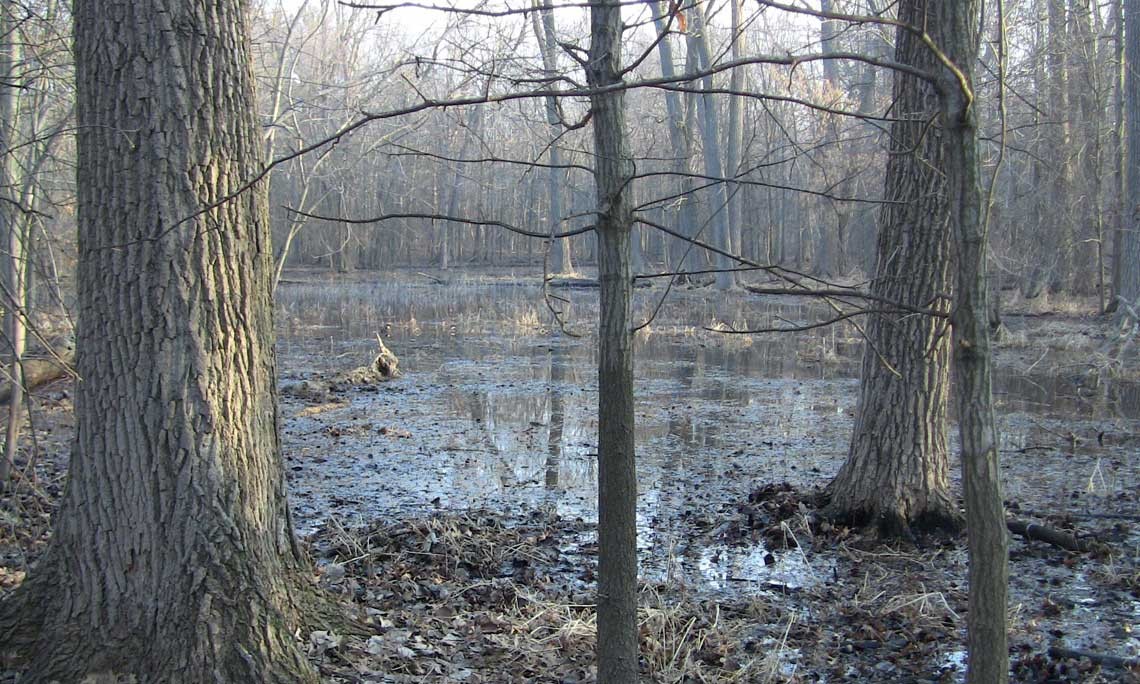Newton County
James P. Vacendak Wildlife Reserve
20 acres of woods and wetland, dappled in spring with ephemeral ponds, the James P. Vacendak Wildlife Reserve is a wonderful spot for amphibians. On a cold early spring night in Newton County, tiger salamanders will crawl from hibernation and head to the recently unfrozen water. The salamanders move is driven by determination to breed in the pin oak wetlands.
Salamanders mate and lay their slimy egg masses in the water as they have done for thousands of years. The eggs will hatch and the young larva will eat large numbers of mosquito larvae in a race to mature beyond the gill stage before the water dries up in summer. Those that do mature, will leave the wetland and continue their life underground in the soil searching for worms and other small invertebrates to eat. In the fall they will dig below the frost line, before emerging in spring and beginning the cycle again.Activities
- Bird Watching
- Mushroom Harvesting Allowed
- No Trails
- Wildflowers
History of Acquisition and Property
Gretchen Vacendak and her late husband James used these woods as a country escape, a place for their three boys to explore nature. They planted white pines, red pines, and walnut trees around a family camp, which included a small fire pit for cooking and shallow well with a hand pump for water. They enjoyed the blue flag iris and the multitude of wildflowers around the edges of the wetlands, and occasionally even caught a glimpse of a sandhill crane resting during migration. Over the years their children learned to shoot, built tree houses and rafts in using the property during all seasons.
NICHES is honored to have the responsibility for the management of the property, now known as the James P. Vacendak Wildlife Preserve. Come on out and experience the wonders of nature that the Vacendak family has known for decades.



